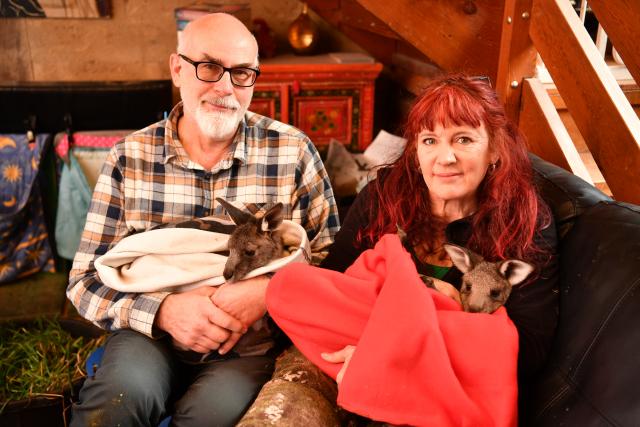Until a few years ago, wildlife rescuer Manfred Zabinskas OAM hadn’t seen potentially fatal hookworm infections in local kangaroo populations before.
Now, he’s frequently called out to properties to find sickly, “bizarre”-looking joeys and small roos suffering with the disease, also known as globocephaloides.
“It’s been an increasing situation, to the point where it’s that bad we’ve had some property owners report five or six animals die in their own yards from this condition,” Mr Zabinskas said.
Mr Zabinskas works alongside Helen Round at Five Freedoms Animal Rescue in East Trentham, where they take the roos before seeking further veterinary assistance.
Kangaroos with the infection, usually joeys, are often discovered away from their mob, hiding in sheds or in covered places. They look sick – with choppy coats and skinny bodies, sometimes bloated in the face.
Mr Zabinskas and Ms Round encouraged locals to report these crook animals as soon as they see them, not only to seek help, but also to the Department of Environment, Land, Water and Planning to shed light on the issue.
Ms Round said the increase in numbers is linked to the La Niña wet weather, in which hookworm thrives. She also urged livestock and pet owners to make sure their animals are wormed.
“It’s serious, I’d say there were hundreds in the area dying every year now. It’s something very recent that’s become a problem,” Mr Zabinskas said.
Earlier this year, the duo rescued little joey Brunhilde, bringing her back from the brink. Now, Brunhilde is hopping around, and can take milk from a bottle standing up.
“We are so pleased and amazed the Brunhilde has survived as she was a worm riddled, anaemic, hypothermic skeleton with a blood glucose count of 1.1,” the rescue shelter posted on Facebook.









